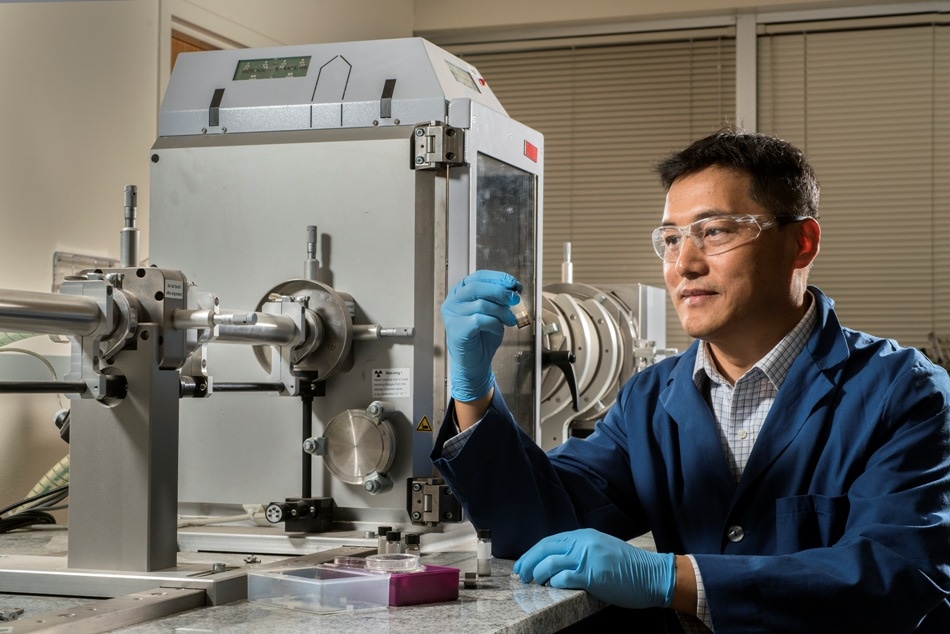Aug 3 2018
Applying a clever combination of nanotechnology and basic chemistry, Sandia National Laboratories scientists have driven gold nanoparticles to self-assemble into remarkably large supercrystals that could considerably enhance the detection sensitivity for chemicals in drugs or explosives.
 Sandia National Laboratories researcher Hongyou Fan holds a container enclosing gold supercrystals in front of a small-angle X-ray scattering instrument, one of the tools he uses to characterize his unusual creations. (Image credit: Randy Montoya)
Sandia National Laboratories researcher Hongyou Fan holds a container enclosing gold supercrystals in front of a small-angle X-ray scattering instrument, one of the tools he uses to characterize his unusual creations. (Image credit: Randy Montoya)
“Our supercrystals have more sensing capability than regular spectroscopy instruments currently in use, just like a dog’s nose has more sensing capabilities than a human’s,” said lead Sandia researcher Hongyou Fan.
Earlier reported gold supercrystals formed by other scientists were only in the micron range, very small for commercial production, said Fan, whose submillimeter supercrystals are easily controlled using industrial tools of the macroworld.
The bench-top sensors, lately reported in Nature Communications, also are remarkably inexpensive, Fan says. “The supercrystals are built of gold, but only a little of it.” It takes 0.012 g of gold to create a sensor, for a total materials cost of approximately 50 cents.
To create each of the Sandia supercrystals, millions of gold nanoparticles securely self-assemble in systematic rows. The particles naturally form facets—resembling those cut in diamonds by a jeweler—to survive at the lowest possible energy level desirable to maintain the existence of the crystal.
Crystal facets ‘bay’ like hounds
The facets are adept at recognizing and conveying signals. They “bay” in groups like hounds—that is, produce a strong signal—when a predetermined external frequency is “sniffed.” That is because when a nanoparticle identifies a band frequency and makes it resonate, that energy will transfer to other nanoparticles, coupled by proximity and the local electromagnetic field. The alerted nanoparticles increase the response in a kind of echoing action, making obvious what in less keen sensors may have passed unobserved.
The early formation of the crystals includes dispersing gold particulates about 5 nm in diameter into a “good” solvent, toluene. They then are exposed to a bath in a “hostile” solvent, isopropanol, which the particles supersaturate and from which they are then precipitated or ejected.
The ejected particles, exiled from the solution, then crystallize as tiny seeds. The growth of facets makes them available to react to a broad range of incoming chemical odors or light band frequencies.
The proper concentrations of materials and particle immersion times are crucial factors in forming large crystals. The process may stretch to about seven days.
The research was sponsored by the U.S. Department of Energy’s Basic Energy Sciences office and by Sandia’s Laboratory Directed Research and Development program. Work was done partly at the Center for Integrated Nanotechnologies, a DOE Office of Science user facility jointly managed by Sandia and Los Alamos national laboratories.